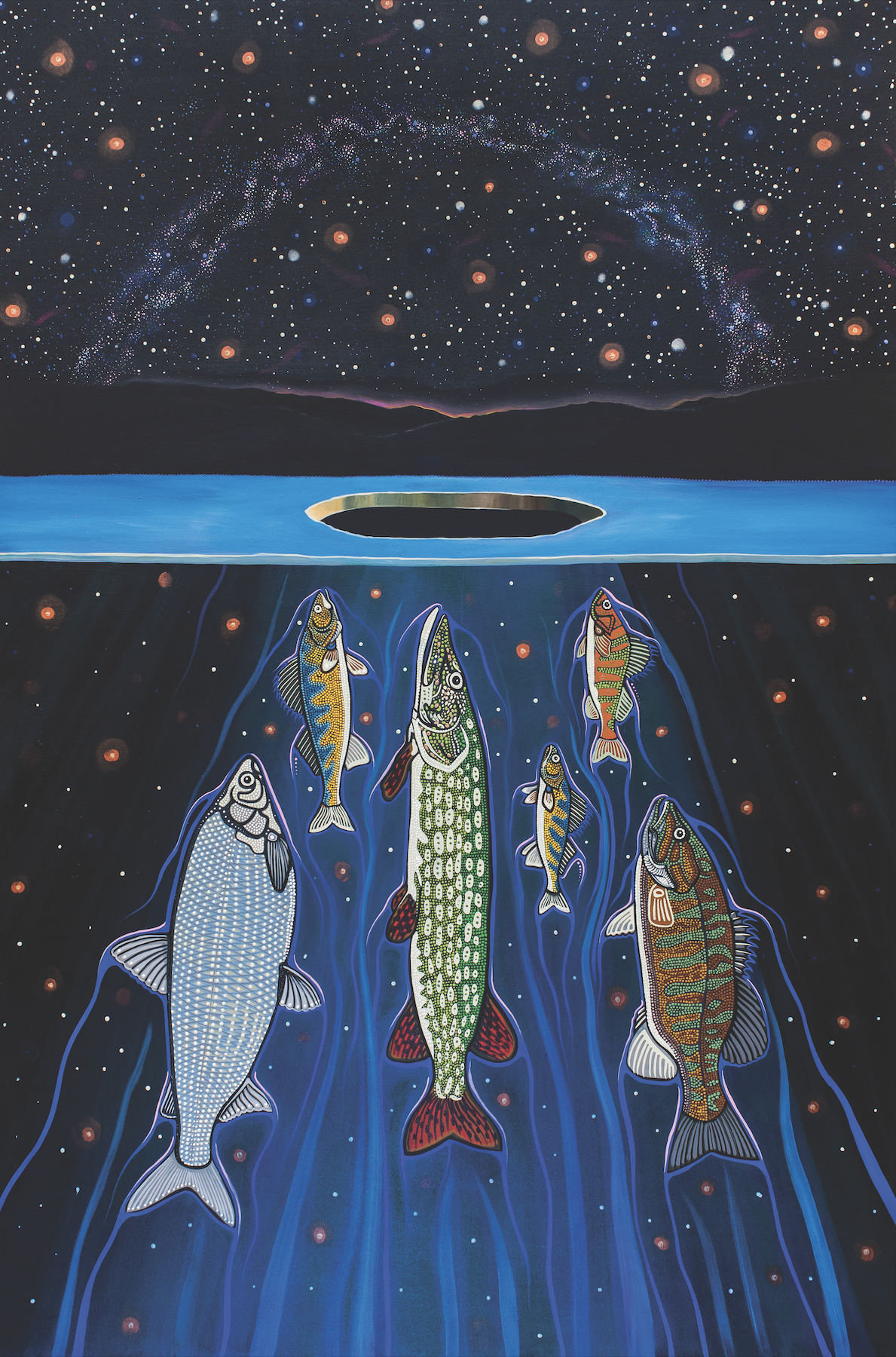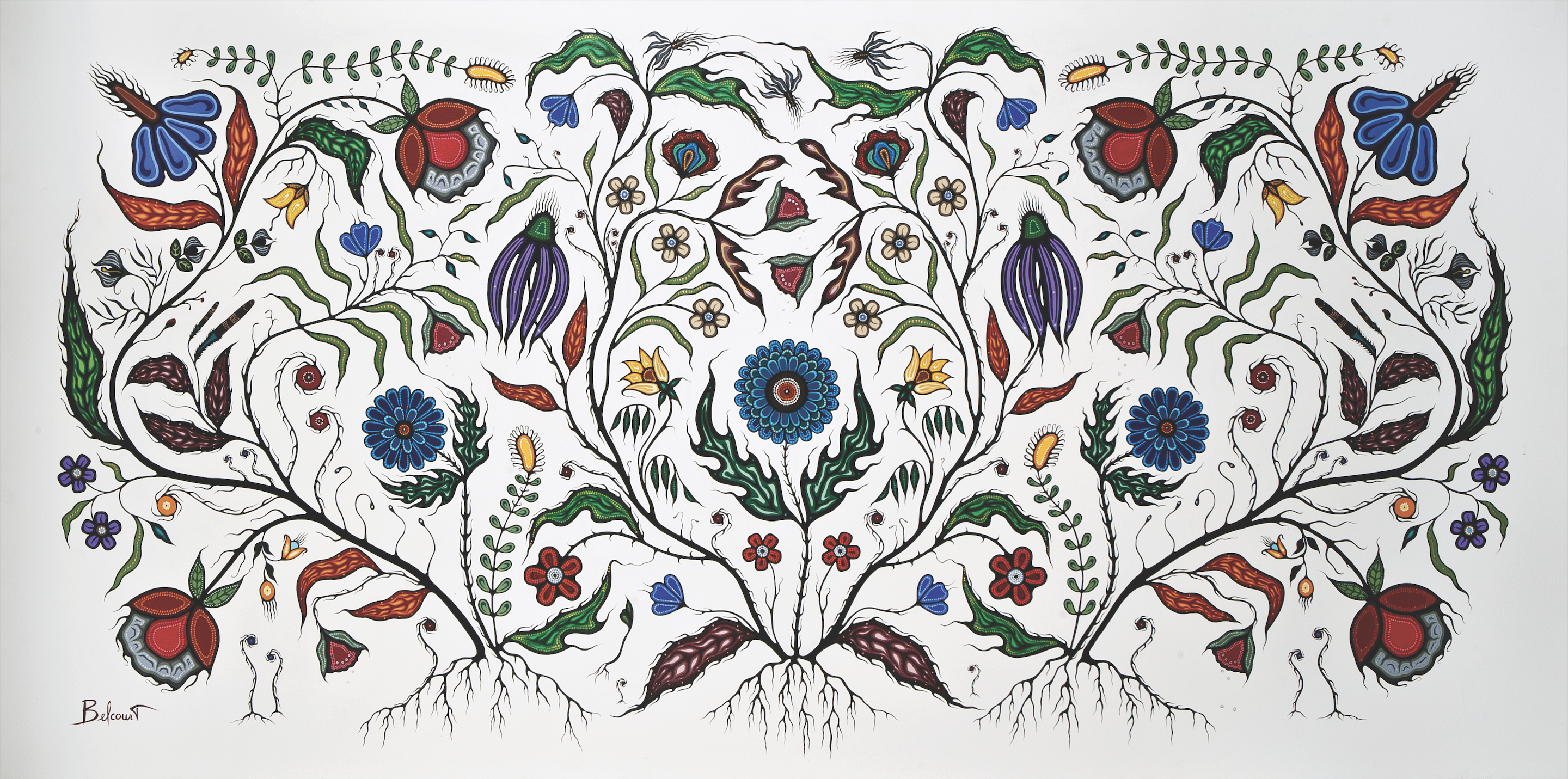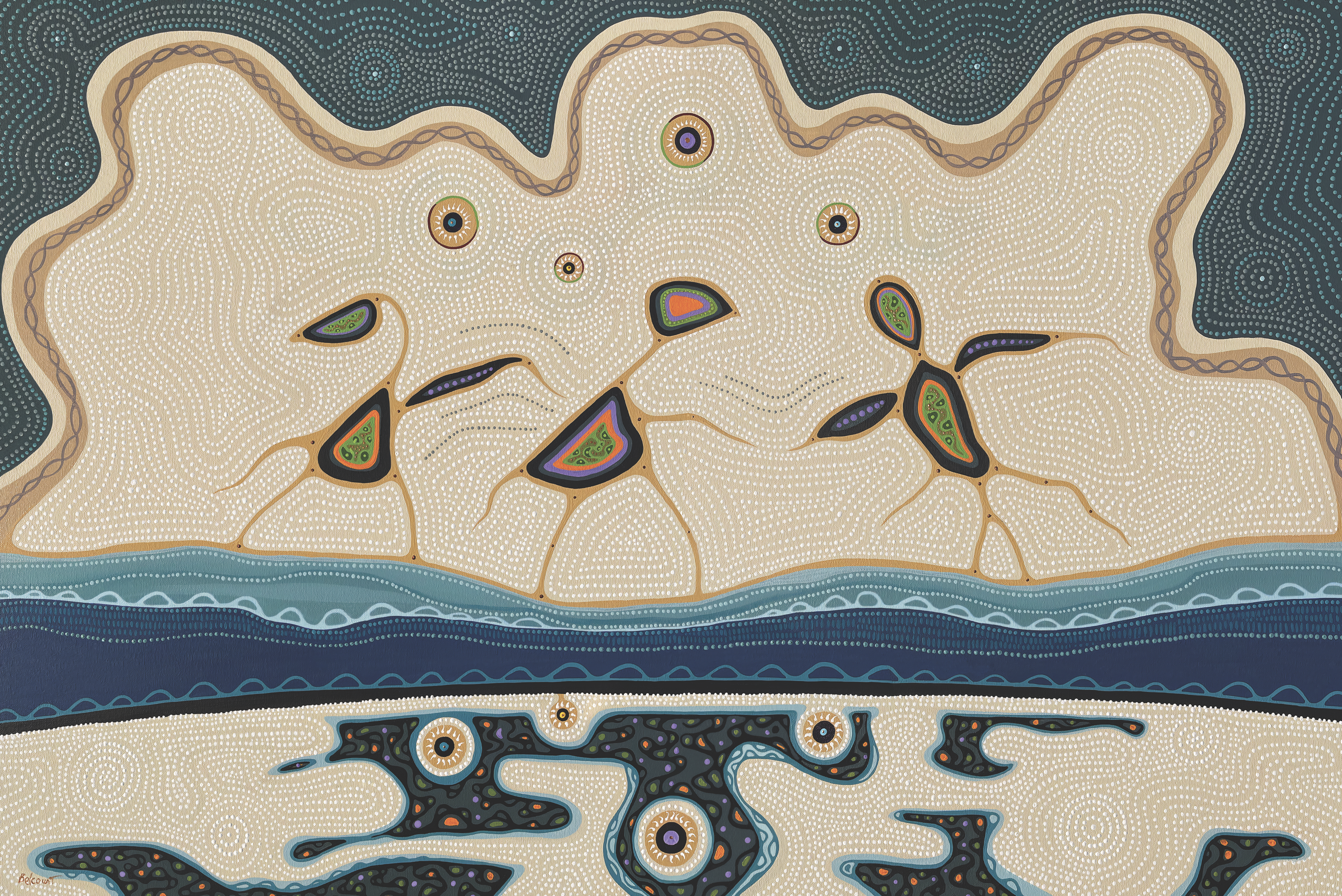Indigenous artist Christi Belcourt’s floral artworks represent the life force of the earth and promote regreening and sustainability.
Arguably Canada’s best-known Métis artist, Christi Belcourt paints large-scale acrylic on canvas artworks depicting vibrant floral images and landscapes from nature. In the tradition of Métis floral beadwork – known for motifs in which flowers are typically connected by stems and vines – Belcourt’s works bloom with intertwined plants, flowers, animals and birds. Using dots, she paints a story about environmental stewardship, biodiversity and the spirituality of Métis culture. It’s a powerful “green” story that has even attracted attention in Milan, Italy, where the famous fashion house Valentino featured her artwork in a collection.
“My work reflects my deep love, respect and awe for the beauty of this world and my desire for every person to take leadership of the Earth – and understand how we must live in balance with each other and with the Earth,” says Belcourt.
 The fish fast according to knowledge from the spirit world2019. Acrylic on canvas, 36 x 48 inches.
The fish fast according to knowledge from the spirit world2019. Acrylic on canvas, 36 x 48 inches.
Belcourt, 57, strives for that exact balance in her rural northeastern Ontario province. She walks the land, observes the many species around her, and then depicts them in her idea-driven paintings. “I don’t do anything that would be a landscape that you would recognize as a specific place, but I try to capture the feeling of a place,” she explains. “I’m depicting more and more species that are on the endangered species list, and of course, that’s to bring attention to those species and hopefully contribute to the awareness that needs to be raised.”
Many of her paintings depict root systems, which have artistic and figurative significance. “I believe that we are here as spiritual beings and that our lives have more meaning than what we experience on the surface of our lives on a daily basis. The roots are depicted for this reason: to show the importance of soil and plant life to our lives. Roots absorb nutrients; plants in turn give us food and medicine. These things happen underground, and life is a great mystery because it is so big and vast and wondrous.”
 Even my garden knows what peace is2000. Acrylic on canvas, 40 x 72 inches.
Even my garden knows what peace is2000. Acrylic on canvas, 40 x 72 inches.
Belcourt, the daughter of Métis rights activist Tony Belcourt, grew up mostly in the capital city of Ottawa. She dropped out of high school after Grade 11, married, had a daughter and left the city in the 1990s to focus on plant-based artwork. Her intention with her art: “To motivate people to protect the land and waters in the areas where they live.”
In Even my garden knows what peace isshe says, “The idea is, when you go out onto the land, sit there for a moment and quiet your mind, understand that this earth naturally knows how to live in balance. It can restore us to a sense of health, well-being and balance if we listen to it.”
The continued presence of Métis culture is the idea behind The partywhile The fish fast according to knowledge from the spirit world is about deep-frozen fish that fast during the winter and thus gain knowledge about the stars that humans can absorb when they later eat the fish. North Star recognizes the stars that have guided all life since time immemorial, and the underlying message is a warning about the satellite pollution that fills our skies. The night shift is an ode to the moths and other insects that do pollination work at night.
 Tree spirits leave the fire2007. Acrylic on canvas, 24 x 36 inches.
Tree spirits leave the fire2007. Acrylic on canvas, 24 x 36 inches.
Belcourt’s commitment to community extends beyond her paintings. She was the project creator of Walking With Our Sisters, a memorial art installation of more than 1,700 moccasin shoes created to commemorate the Missing and Murdered Indigenous Women and Girls movement, which seeks to raise awareness of the widespread issue. As co-creator of #Resistance150, she reminded Canadians that Indigenous peoples have inhabited the land for 15,000 years and have historically resisted discriminatory practices. She co-created the Onaman Collective to preserve Indigenous language and art, and has printed thousands of banners with her art to inspire community action to protect water and land.
“Communities are completely powerless when companies want the resources they live on,” says Belcourt. “They have no power to stop ‘development.'” Belcourt believes it is our duty as people and her duty as an artist to fight for the next generation.
Belcourt’s art is part of Radical stitcha group exhibition that in 2024, including a stop at National Gallery of Canada. She is represented with two pieces in the exhibition How to survivemounted on the Anchorage Museum in Anchorage, Alaska, until January 19, 2025. It also has a commission from the Philbrook Museum in Oklahoma in 2024.
PHOTOGRAPHY: Courtesy of the artist
HEADPHOTO: The night shift2023. Acrylic on canvas, 76 x 102 Customs service.
From our October 2024 issue.




